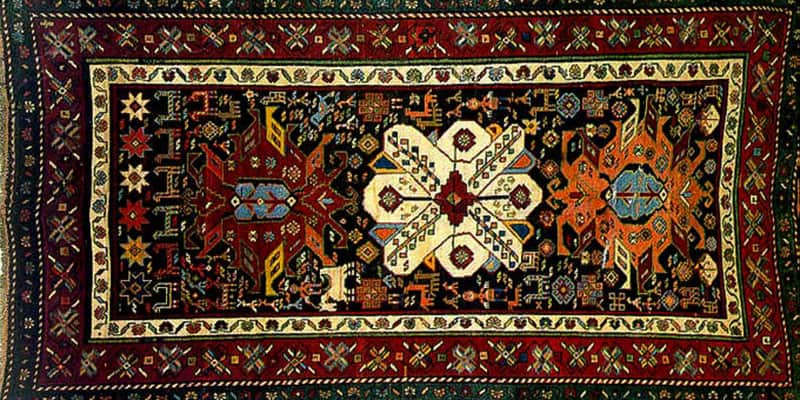The Armenian Carpet

British polymath Sir William Jones (1746-1794) enunciated for the first time the existence of the Indo-European family of languages in 1786. It already comprised languages from England to India. In the early nineteenth century, the Armenian language was also incorporated into the family, and in 1875 German linguist Heinrich Hübschmann (1848-1908) demonstrated, contrary to generally held belief, that Armenian was not part of the Iranian branch, but was an independent branch.
For the past hundred and thirty years, extensive research has been carried to study the Armenian language and its relations with its relatives within the family. It has been shown that Armenian has the closest relation with Iranian and Greek, to the point that we may consider them first cousins.
Similar to other Indo-European languages, English is a distant cousin to Armenian. This would not be surprising, if we consider the geographic distance between the lands where Armenian and English were and are spoken. But it is surprising to find out that both languages, despite that distance, share a few words with practically the same phonetics and meaning.
One of them is our familiar term carpet. According to the Online Etymology Dictionary, it comes from Middle English carpet “coarse cloth” (late 13th century) and was derived from Middle French carpite “heavy decorated cloth”(< Old Italian carpita “thick woolen cloth” < Italian carpire, Latin carpere “to pluck”).
Let’s go to Armenian. Classical Armenian (krapar) had a word, capert (կապերտ; the Western Armenian pronunciation is gaberd), which already appears in the Bible and means“piece of cloth.” It may or may not be related to the word cap “knot” (կապ, Western Armenian gab); the etymological dictionary of famed linguist Hrachia Adjarian (1876-1953) says nothing about that, which means that he did not consider it possible.
The colloquial form of capert was carpet, said Adjarian, and brought forward a collection of words in Armenian dialects very close to the English one: carpet (կարպետ) in Salmast, Van, Yerevan, and Tiflis, the same as in Kharpert and Sepastia (accented on the last syllable). They call it carpret (կարպրէտ)(accented on the first syllable) in Gharabagh, and called it garpet (կարբեդ) in Alashkert and Moush. The Armenians from Tigranakert (Diarbekir) used the word cârpit (գարբիդ), and the Armenians in Hamshen say carpit (գարբիդ). Interestingly, all of these words mean “rug without hair.”
At the turn of the twentieth century, the German linguist Erich Berneker published an etymological dictionary of the Slavic languages in two volumes (Heidelberg, 1908-1914). He noticed that the Armenian dialectal words were the same as the abovementioned European words, and also German karpet, Hungarian and Serbian karpit (“curtain”), and Serbian krpita (“rug to cover the table”). Adjarian took note of this and asked himself whether the source of these words was not, instead of Latin carpo “to knit wool or thread,” the late Armenian form carpet. In the end, the Armenian kingdom of Cilicia had been one of the main commercial venues for European traders in the Middle Ages, including carpets. Florentine merchant Francesco Balducci Pegolotti reported that carpets were imported from Sis, the capital of Cilicia, and Ayas, its main port, to Florence in the late thirteenth and early fourteenth centuries. What could have been a “thick woolen cloth” in Italian, if not a rug?
Thus, the ubiquitous carpet may have flown from Armenian, through Italian and French, into the English language, and centuries later, when Persian carpets were introduced in Europe, the word carpet went down to the floor.
